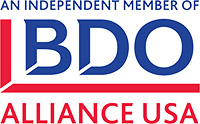What is UNICAP?
UNICAP is an IRS tax treatment rule. It is also considered an IRS accounting method, but unlike some other accounting methods, it is not optional. The acronym UNICAP stands for “Uniform Capitalization Rules”. In the Internal Revenue Code, it is covered under Section 263A, located within Subtitle A – Income Taxes, Chapter 1 – Normal Taxes and Surtaxes, Subchapter E – Accounting Periods and Methods of Accounting. Commonly it is referred to as 263A. For the remainder of this article, I will use 263A and UNICAP, interchangeably. To determine if a taxpayer is subject to Section 263A when reviewing a business tax return, check if Form 1125-A is included in the return and verify whether question 9e is marked “yes.”

______________________________________________________________________________________________
refers to how inventory is treated
for tax purposes
To gain a clearer understanding of 263A, it is helpful to first grasp the basics of inventory costing under GAAP (Generally Accepted Accounting Principles). In simple terms, inventory refers to the goods and materials a business holds for production or resale. The costs associated with these goods and materials are recorded as inventory on the balance sheet. When the finished goods are sold, the inventory on the balance sheet is reduced, and the corresponding cost is recorded as a cost of goods sold expense on the income statement.
The concept of capitalizing inventory costs and expensing them when the related sale of the inventory occurs aligns with the “matching principle” under GAAP. By removing the timing of “cash transactions” from consideration, it ensures that the financial statements more accurately reflect the timing of sales and their related expenses. A similar concept in tax law is “economic performance,” which ensures that taxpayers recognize deductions in the correct tax period.
In a basic income statement for a producer or reseller, there will be a line for cost of goods sold, followed by additional lines for selling, general, and administrative expenses. The cost of goods sold line typically includes direct materials, direct labor, direct overhead (such as rent, insurance, depreciation, and utilities), other direct costs, as well as some indirect costs, work–in–progress, and unsold finished goods.
Why Did the IRS Establish UNICAP?
Under GAAP, companies must include certain indirect costs in inventory if they are directly related to the production or acquisition of goods. These costs typically include items like factory overhead (e.g., utilities, depreciation, and insurance). However, companies have less flexibility when deciding which indirect costs to allocate to inventory versus expensing them as selling, general, and administrative expenses. The rules under Section 263A of the Internal Revenue Code address this by requiring that, for tax purposes, these indirect costs be capitalized as inventory, even if they are not treated as inventory under GAAP. The rationale is that some of these indirect costs directly benefit or impact the production or resale of goods.
Some common scenarios that could result in 263A adjustments:
- Costs related to an in-house accountant who predominately prepares financial statements, but spends 10% of their time analyzing standard cost formulas for the production team.
- Generally, under GAAP, the salaries and benefits of the accountant would not be included as part of the cost of inventory.
- Under the rules of 263A, 10% of the accountant’s salary and benefits would be capitalized as a cost of inventory.
- Administrative offices of a manufacturer that are partially used for short-term warehousing.
- Under GAAP, the partial use of a administrative facility for short-term storage may be treated as a period cost.
- Under 263A, the cost of the partial use of the offices for short-term storage of inventory would be capitalized as a cost of inventory, the cost of the partial use of the offices for short-term storage of inventory would be capitalized as a cost of inventory.
The ultimate goal behind UNICAP is to ensure that all companies have a similar or “uniform” approach of recording inventory.
Who is subject to UNICAP?
As mentioned, companies that manufacture or resell tangible goods are generally subject to Section 263A. However, some businesses may be exempt from these tax rules if they qualify as small businesses. To qualify for this exemption, the average gross receipts for the past three years must not exceed $29 million (adjusted annually for inflation). Gross receipts include total sales, net of returns and allowances, as well as other income such as investment income. Additionally, aggregation rules apply if multiple businesses are under common control.
See how 263A exemption rules apply under 2 example scenarios below:
- XYZ company has average gross receipts for the prior 3 years of $30 million, $29 million, and $25 million.
- Is XYZ Co. subject to 263A?
- No, average gross receipts are $28 million
- No, average gross receipts are $28 million
- Is XYZ Co. subject to 263A?
- Company A and Company B have common ownership. Co. A has 3-year avgerage gross receipts of $27 million but Co. B only has 3-year average gross receipts of $3 million?
- Are either of the companies subject to 263A?
- Yes, both companies are subject under aggregation rules
- Yes, both companies are subject under aggregation rules
- Are either of the companies subject to 263A?
When a company’s average gross receipts exceed the threshold and it becomes subject to UNICAP, this constitutes a change in accounting method. A change in accounting method requires the company to file Form 3115, “Application for Change in Accounting Method.” This form is available on IRS.gov.
Closing Thoughts
The main purpose of the 263A rules is to promote consistency in how companies treat and include indirect costs in their inventory. In our next article, we will explore one method for performing the UNICAP calculation.





